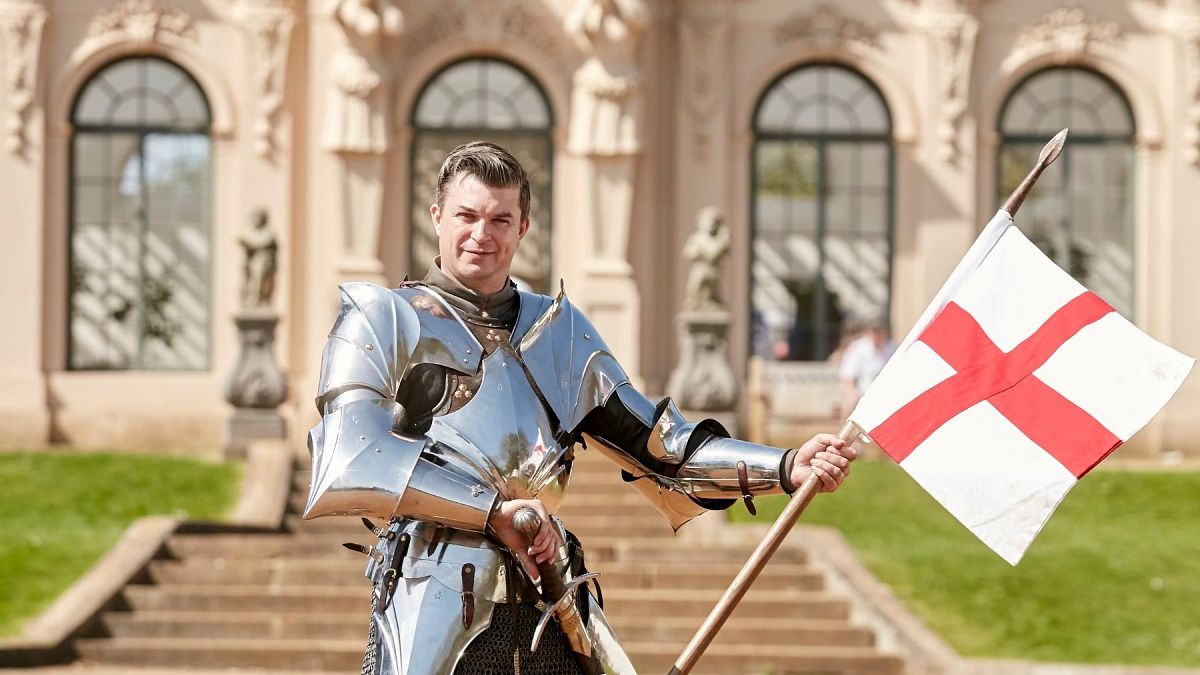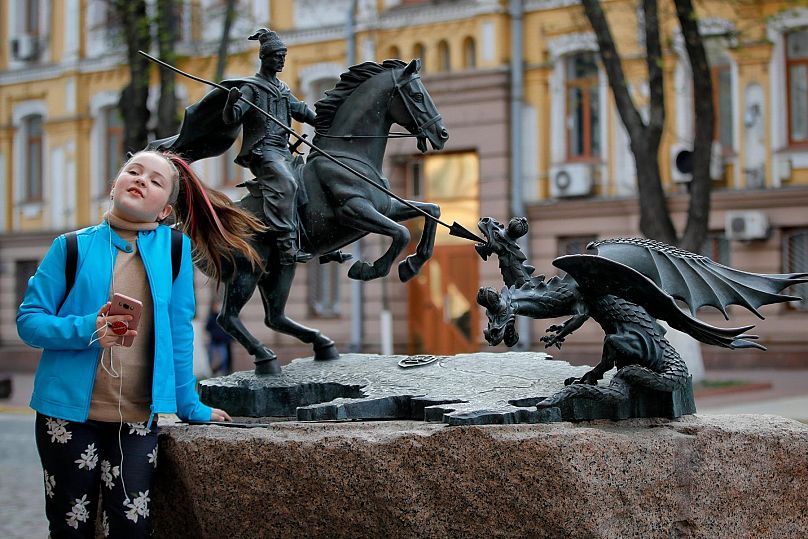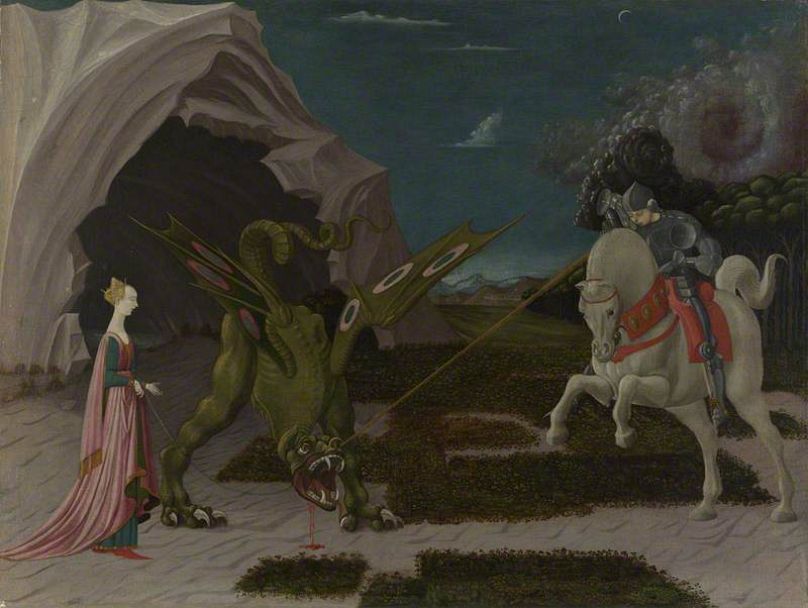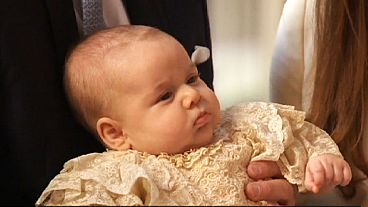The patron saint has been depicted in countless works of art, and the date of his martyrdom is celebrated in many European countries.
This weekend countries across Europe will commemorate the death and martyrdom of their patron saint: George.
St. George's Day is marked in Georgia, Bulgaria, Portugal and Romania; and in parts of Spain and Germany, the Czech Republic, Hungary and Slovakia.
In England the date has taken on significance as a celebration of all things patriotic and English, with red and white flags adorning many public buildings and private homes on the most 'English' day of the year.
So was St. George originally from England? Or perhaps from Georgia, Hungary or Portugal? Far from it.
"How would he have identified himself? That's always an interesting question" asks Dr Michael Carter, an historian with English Heritage.
Historians do know that George was a real person, a soldier in the Roman army who was ultimately executed for failing to renounce his Christian faith.
"He lived and died in the modern-day Middle East in the Roman province of Palestine, somewhere around there. He would have identified himself as a Roman, he was probably a Greek speaker on the basis of his name, but probably most of all he would have identified as a Christian. There's multiple overlying identities" Dr Carter tells Euronews.
So George is undoubtedly Europe's most multicultural saint, meaning different things in different countries. And even over the centuries since his death his 'origin story' has evolved and taken on mythical properties.
"He goes from being a martyr, about who we know very little, to being a 'military saint' one of the officers in the Roman army who were killed for refusing to sacrifice the pagan gods, and then he becomes a holy dragon slayer" says Dr Carter.
"And then basically, in England at least, he gets shorn largely of his sacred association and become the personification of nationhood."
Saint George in art and literature
There are countless depictions of St. George in art and literature, poetry and songs.
Most paintings depict him slaying a dragon -- a part of the legend that was added hundreds of years later -- but even his physical appearance in the world of art has changed century by century: sometimes he's hyper-masculine, other times his features are softer and more angelic.
In English portrayals he's obviously depicted as white even though he would have looked Middle Eastern. And he's frequently shown wearing the shiny armour of a knight of the realm -- although armour in that style wasn't even invented until a thousand years after George's death.
"For whatever time period they are, they plonk them in the dress and armour of their period" to make the saints relevant and relatable to the people of the day, English Heritage's Dr Michael Carter explains.
"He's depicted as a military saint from quite early on and I think his dragon-slaying prowess is present from the 9th century, and certainly prominent in England from just after the Norman conquest."
An aspect of St. George's attributes that is often overlooked these days is his association in the Middle Ages with being a protector of armies, and Dr Carter explains he was also know as a healer of people with syphilis.
Feasting with pigs for Saint George
While St George was well known across the Byzantine Empire, his martyrdom and veneration didn't become popular in England until much later, and even then took several centuries to evolve.
The earliest evidence of George's veneration in England was a pilgrimage to his shrine in modern-day Israel in the year 720 by an Anglo-Saxon missionary called Willebrord; and it took until the 9th century for a feast day to be celebrated in England.
St. George's Day during the Middle Ages -- and right through the reformation of the 16th century -- was a time for towns and villages to take a day off work and feast.
Local guilds dedicated to St. George had religious and civic responsibilities and that included paying for the celebrations, a parade and food for the townsfolk.
"They would probably eat pork," says Michael Carter. "It was the cheapest and most accessible meat in the Middle Ages."





